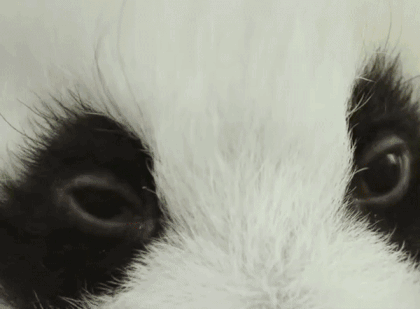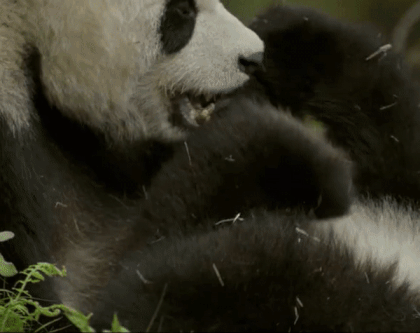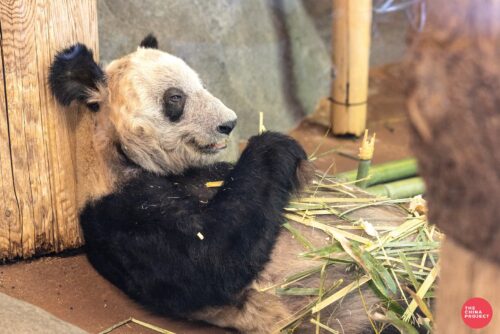‘The Hidden Kingdoms of China’: Pandas, Tibetan foxes, flower mantises, oh my

The first episode of the nature documentary series The Hidden Kingdoms of China, a collaboration between Bilibili and National Geographic, takes us deep into China’s magical bamboo forests.

In the past decade, there’s been a panoply of nature documentaries bringing the wonders of China’s wildlife to international screens. Perhaps the most successful was Wild China, a 2008 collaboration between the BBC and China’s national broadcaster, CCTV. It presented remarkable and unknown Chinese flora and fauna, winning three Emmys in the process. And perhaps because of its success, imitators were sure to follow.
With that in mind, tonight marks the international premiere of The Hidden Kingdoms of China (Nat Geo Wild), which hopes to arouse similar awe of the nation’s natural heritage, bringing “magical realms to life in the most dramatic ways possible.” It’s certainly proved popular in China: The first episode received 70.9 million hits in the first nine days after its premiere on Chinese streaming site Bilibili. The five-episode season will eventually be available in 172 countries and 43 languages, including the U.S. starting next month.
Hidden Kingdoms is a blockbuster collaboration between Bilibili and National Geographic, whose crews were given unique access to some of China’s most inspiring landscapes — tropical jungles, bamboo forests, mountain peaks, deciduous forests, and great plains. It promises a menagerie of remarkable animals, including the Tibetan fox, the snow leopard, and the golden snub-nosed monkey.
The first episode on Bilibili covers the vast bamboo forests of Sichuan and Central China, and director Patrick Morris knows just which Western heartstrings to pluck. Some in the U.S. may still be mourning the loss of Bei Bei from the National Zoo in Washington, D.C., who was sent back to China last month after being born and raised in the U.S. Cue an episode bursting with panda-eyed cuteness, pivoting around a cub slowly learning life’s lessons, rising from wide-eyed baby taking its first shuffle through the undergrowth to a sprightly toddler clawing up trees (learning the hard way that branches do not always hold its weight).
But it’s not all about everyone’s favorite Chinese mascot. The forest is full of magic: the ravishing red and gold plumage of a golden pheasant strutting in front of a mate, or the slick warning flash from the wings of a jeweled flower mantis, a dazzling array of green and pink and black. There’s also a place for drabber forest-dwellers such as the horn-lipped Emei moustache toad huddling under stones on the riverbed, equipped with a deafening croak.
Each animal has been carefully selected for its links with Chinese culture, which developed in harmony with the natural world. The Monkey King echoes in the shrieks of a Tibetan macaque. Chinese ancients saw harmony in the yin and yang of the blotched markings on the giant panda. Kung fu masters found inspiration in the swift pounce of the jeweled flower mantis. Meanwhile, modern science may see harmony in how each creature has evolved perfectly to fit its surroundings — take the tiny bamboo bat, whose skull is flat enough to fit perfectly into nest holes carved by beetles into bamboo stems.
But there’s a fine line between harmony and idealization. Tibetan macaques at Mount Emei are described as “treasured,” but in reality they are more aggressive pest than precious gem — visitors buy sticks to fight them off and monks barricade windows during meal times. Each species appears at ease and mostly on its own — pandas playing, monkeys grooming, pheasants courting to the dulcet strains of the erhu. More could have been made of interactions between different animals through hunting or competing for resources, injecting the diversity and gritty life-struggles of the real bamboo forest. Giving it a “magical” luster makes it no different from the zoo.
The big shame of Hidden Kingdoms is the lack of interaction between humans and nature. China has done a lot more than simply find “inspiration” by objectively admiring nature’s pretty things. In Confucian thought, humans and nature interact seamlessly, mankind’s well-being dependent on harmony with Heaven and Earth. Man should be as flexible as nature, the shifting seasons a reminder that change is the only constant. Calendars were planned around these subtle alterations — the sounds of migrating birds, the blooming of certain plants, the movements of the sun, the changes of the moon. Far from being separate and superior, as in the West, in China man danced to nature’s tune.
The most engrossing of recent Sino-nature documentaries, Wild China, was an international sensation because it revealed this important hands-on dimension. It showcased societies that had evolved for centuries in tandem with nature — birds feeding their chicks fish caught from rice paddies, entire communities living in caves, the symbiosis of trained cormorants fishing for human masters. By comparison, Hidden Kingdoms feels manicured, a pretty but hollow bauble. We have no idea what place humans have (or had, considering mass migration to the cities) in the bamboo forest. China beautifully blurs the boundaries between man and nature, a heritage just as special as the animals on display here. It deserves equal billing.
The Hidden Kingdoms of China has its international premiere today on National Geographic channels. Those in China can watch on Bilibili.






